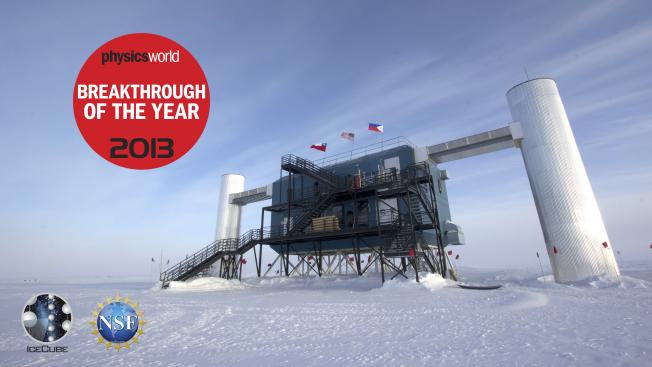Dark Matter Benchmark Models for Early LHC Run-2 Searches: Report of the ATLAS/CMS Dark Matter Forum
(2015)
Searches for time dependent neutrino sources with IceCube Data from 2008 to 2012
Astrophysical Journal IOP Publishing 807:1 (2015) 46-46
Abstract:
In this paper searches for flaring astrophysical neutrino sources and sources with periodic emission with the IceCube neutrino telescope are presented. In contrast to time-integrated searches, where steady emission is assumed, the analyses presented here look for a time-dependent signal of neutrinos using the information from the neutrino arrival times to enhance the discovery potential. A search was performed for correlations between neutrino arrival times and directions, as well as neutrino emission following time-dependent light curves, sporadic emission, or periodicities of candidate sources. These include active galactic nuclei, soft γ-ray repeaters, supernova remnants hosting pulsars, microquasars, and X-ray binaries. The work presented here updates and extends previously published results to a longer period that covers 4 years of data from 2008 April 5 to 2012 May 16, including the first year of operation of the completed 86 string detector. The analyses did not find any significant time-dependent point sources of neutrinos, and the results were used to set upper limits on the neutrino flux from source candidates.Measurement of the Atmospheric $ν_e$ Spectrum with IceCube
Physical Review D American Physical Society D91:12 (2015) 122004-122004
Abstract:
We present a measurement of the atmospheric νe spectrum at energies between 0.1 and 100 TeV using data from the first year of the complete IceCube detector. Atmospheric νe originate mainly from the decays of kaons produced in cosmic-ray air showers. This analysis selects 1078 fully contained events in 332 days of live time, and then identifies those consistent with particle showers. A likelihood analysis with improved event selection extends our previous measurement of the conventional νe fluxes to higher energies. The data constrain the conventional νe flux to be 1.3-0.3+0.4 times a baseline prediction from a Honda's calculation, including the knee of the cosmic-ray spectrum. A fit to the kaon contribution (ξ) to the neutrino flux finds a kaon component that is ξ=1.3-0.4+0.5 times the baseline value. The fitted/measured prompt neutrino flux from charmed hadron decays strongly depends on the assumed astrophysical flux and shape. If the astrophysical component follows a power law, the result for the prompt flux is 0.0-0.0+3.0 times a calculated flux based on the work by Enberg, Reno, and Sarcevic.Marginal evidence for cosmic acceleration from Type Ia supernovae
ArXiv 1506.01354 (2015)



